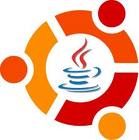Announcing pqR: A faster version of R
Great innovation on R by Radford Neal
pqR — a “pretty quick” version of R — is now available to be downloaded, built, and installed on Linux/Unix systems. This version of R is based on R-2.15.0, but with many performance improvements, as well as some bug fixes and new features. Notable improvements in pqR include:
- Multiple processor cores can automatically be used to perform some numerical computations in parallel with other numerical computations, and with the thread performing interpretive operations. No changes to R code are required to take advantage of such computation in “helper threads”.
- pqR makes a better attempt at avoiding unnecessary copying of objects, by maintaining a real count of “name” references, that can decrease when the object bound to a name changes. Further improvements in this scheme are expected in future versions of pqR.
- Some operations are avoided completely in pqR — for example, in pqR, the statement
for (i in 1:10000000) ...does not actually create a…
View original post 534 more words
What an R is!!
R introduction:
R is an open source software package for performing the various data operations. R has its own programming language used by data scientist statisticians and others who need to make sense of data. R is registered under GNU General Public License. R was developed at Bell Laboratories (formerly AT&T, now Lucent Technologies) by John Chambers and colleagues. R can be considered as a different implementation of S. There are some important differences, but much code written for S runs unaltered under R.
R provides a wide variety of statistical, machine learning (linear and nonlinear modeling, classical statistical tests, time-series analysis, classification, clustering,) and graphical techniques, and is highly extensible. R has various inbuilt as well as extended functions for statistical, machine learning and visualization tasks are like.
-
Data extraction
-
Data cleaning
-
Data extraction
-
Data loading
-
Data transformation
-
Statistical analysis
-
Predictive modeling
-
Data visualization
It’s one of the most popular statistical tools because of freely available, cross platform support, community support and huge numbers of R packages for data operations. With the large numbers of packages, R has easily communicate with other data storage like MySQL, SQLite, MongoDB and Hadoop and etc.
R features:
- Effective programming language
- Various database support
- Data Analytics
- Data Visualization
- Functional extensions by R packages
R popularity:
 Based on the graph provided from KDnuggests, R is the most used data mining language.
Based on the graph provided from KDnuggests, R is the most used data mining language.
R users:
 This graph provides the detail about total numbers of R packages released from the year 2005 to 20013. There is a very high peak value for the year 2012. And still counting for the year 2013.
This graph provides the detail about total numbers of R packages released from the year 2005 to 20013. There is a very high peak value for the year 2012. And still counting for the year 2013.
R provides Data analytics by various statistical and machine learning operations as follows
Popular R Communities:
How to Install JAVA on Ubuntu OPerating System
 procedures for installing java on ubuntu
procedures for installing java on ubuntu
1.first download jdk.tar.gz(http://dc392.4shared.com/download/ZvD6aTLn/jdktar.gz?tsid=20110728-090825-a859e8c8)
2.unpack in to perticular folder
3.tar -xvzf jad.tar.gz
4.chmod a+x jdk1.5.0_17-linux-i586.bin
5../jdk1.5.0_17-linux-i586.bin
6.set PATH of bin directory using export command
7.set JAVA_HOME of jdk
OR try this video..